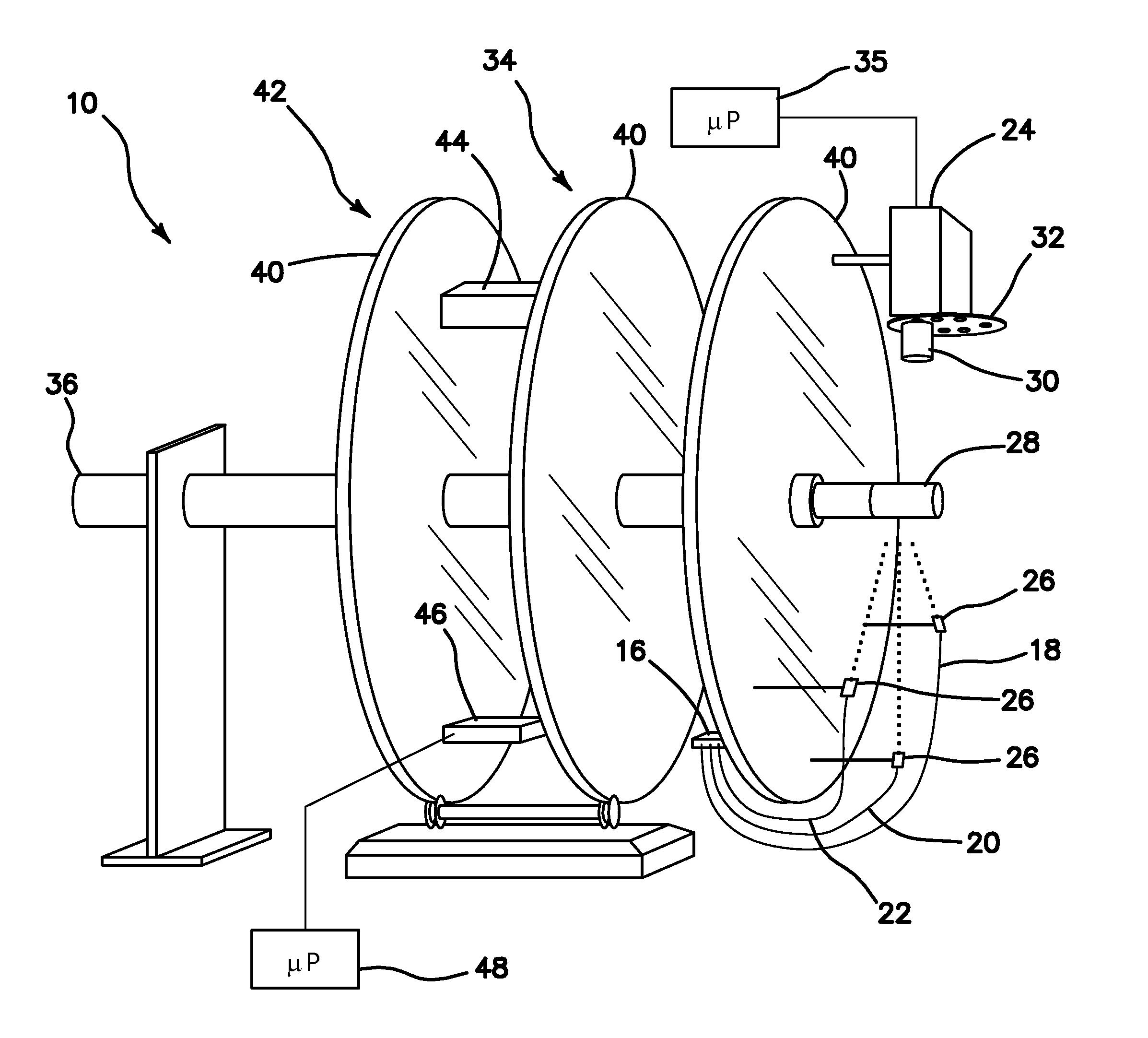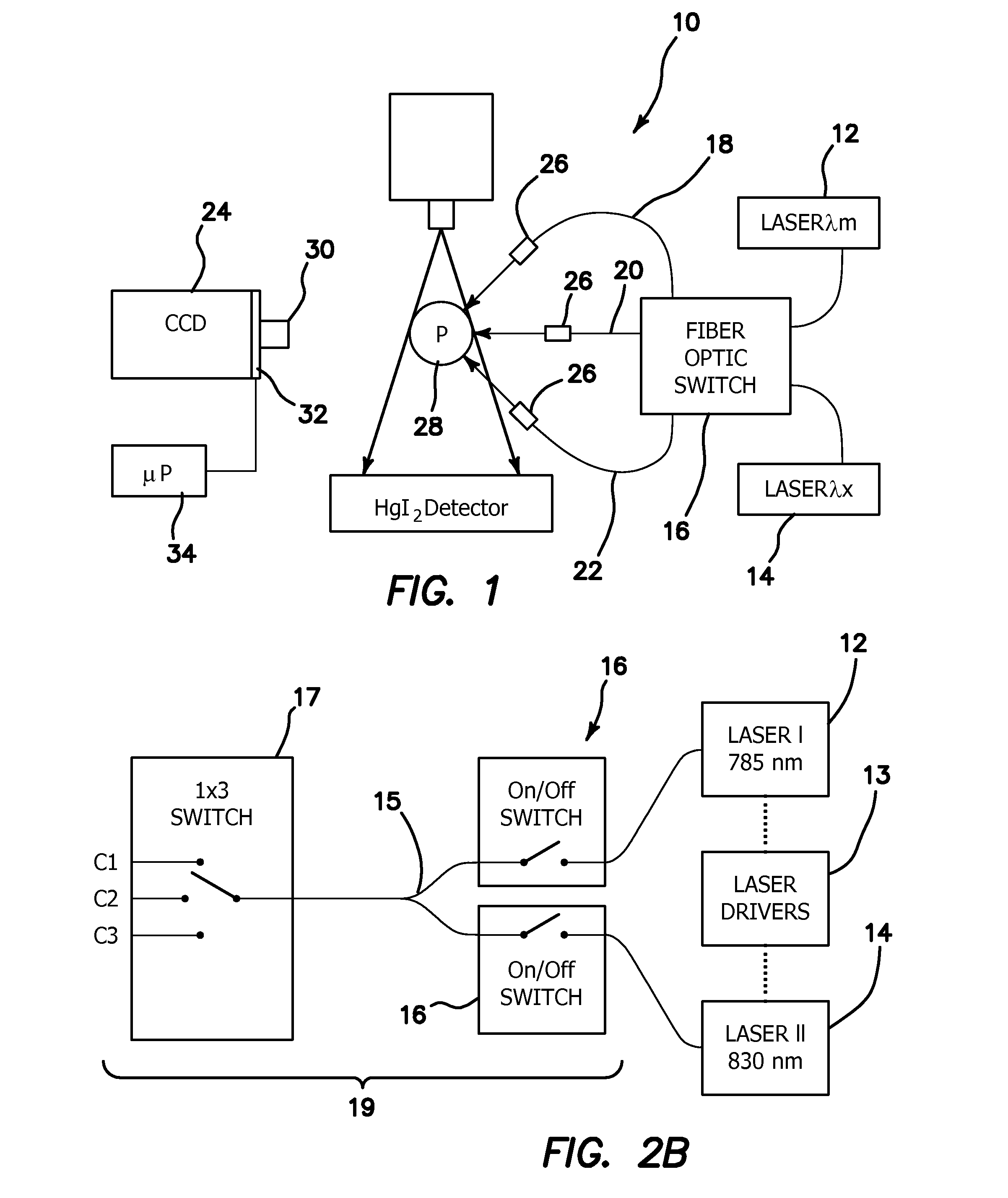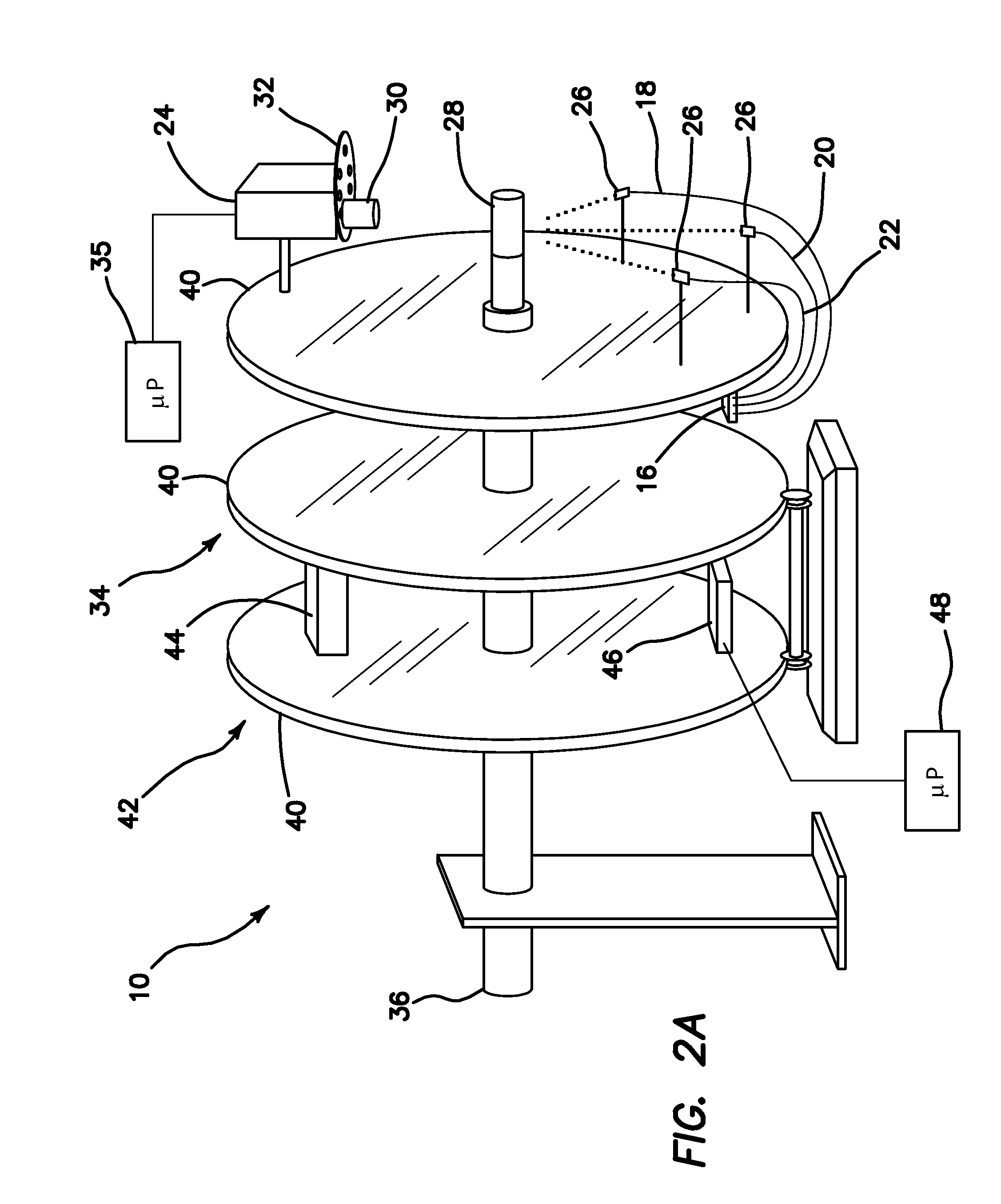Apparatus and method for quantitative noncontact in vivo fluorescence tomography using a priori information
- Summary
- Abstract
- Description
- Claims
- Application Information
AI Technical Summary
Benefits of technology
Problems solved by technology
Method used
Image
Examples
Embodiment Construction
[0064]We have built a first-of-its-kind gantry-based multi-modality system 10 that combines FT, DOT and XCT in an integrated platform. The XCT offers anatomical information while the DOT provides optical background heterogeneity to improve the FT images further. The performance of the system 10 was evaluated using multi-modality phantoms. We first assessed the linearity of the system response using fluorescence inclusions with various concentrations located in a homogeneous, tissue-mimicking phantom. Next, size and location dependence of the recovered fluorophore concentration was investigated. For both studies, the fluorophore concentration maps reconstructed with and without XCT structural a priori information were compared. Finally, we investigated the recovery of the fluorophore concentration of the inclusion in the presence of background heterogeneity. We demonstrated that fluorophore concentration could be accurately recovered only when both functional (DOT) and structural (XC...
PUM
 Login to View More
Login to View More Abstract
Description
Claims
Application Information
 Login to View More
Login to View More - R&D
- Intellectual Property
- Life Sciences
- Materials
- Tech Scout
- Unparalleled Data Quality
- Higher Quality Content
- 60% Fewer Hallucinations
Browse by: Latest US Patents, China's latest patents, Technical Efficacy Thesaurus, Application Domain, Technology Topic, Popular Technical Reports.
© 2025 PatSnap. All rights reserved.Legal|Privacy policy|Modern Slavery Act Transparency Statement|Sitemap|About US| Contact US: help@patsnap.com



